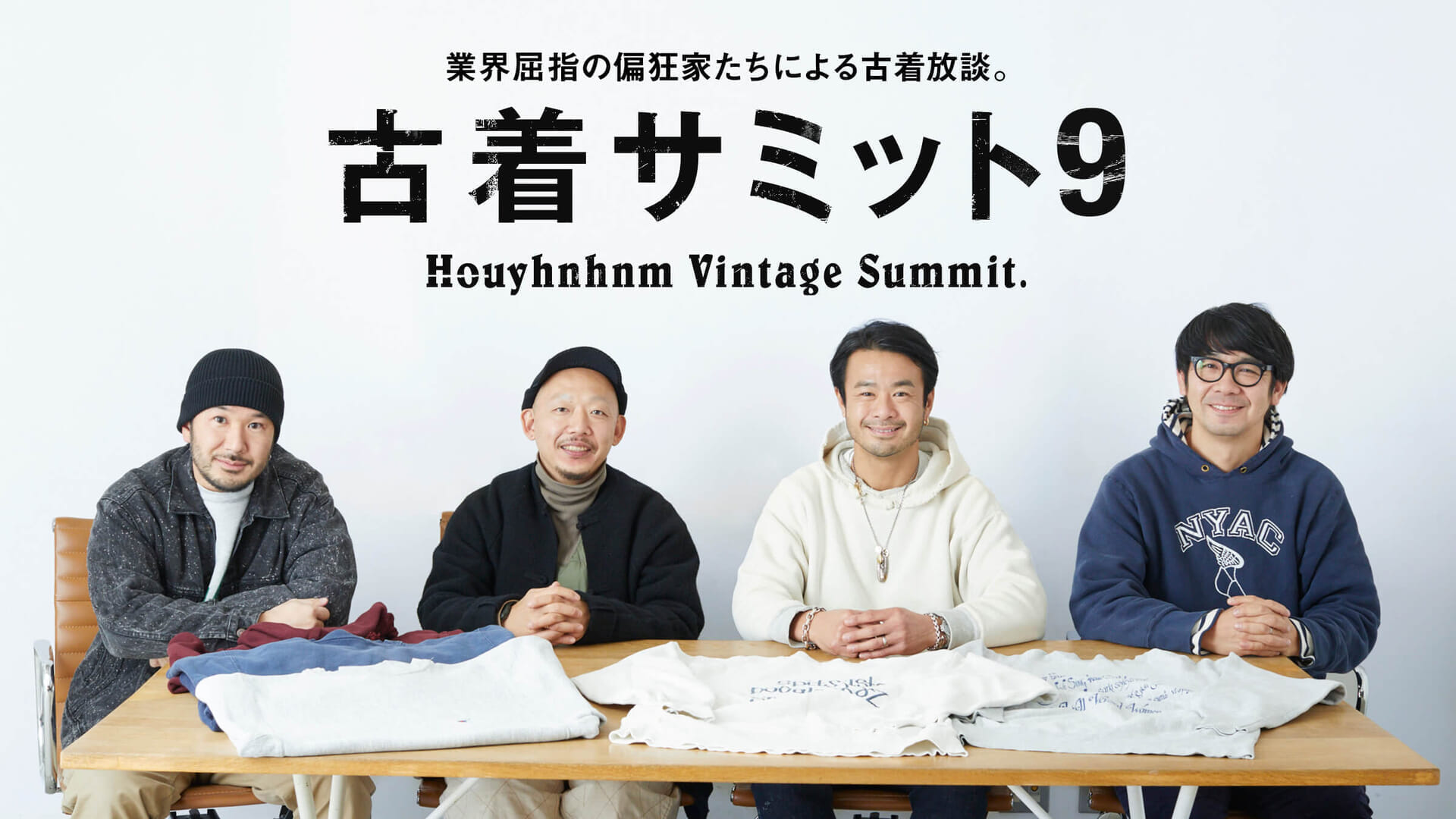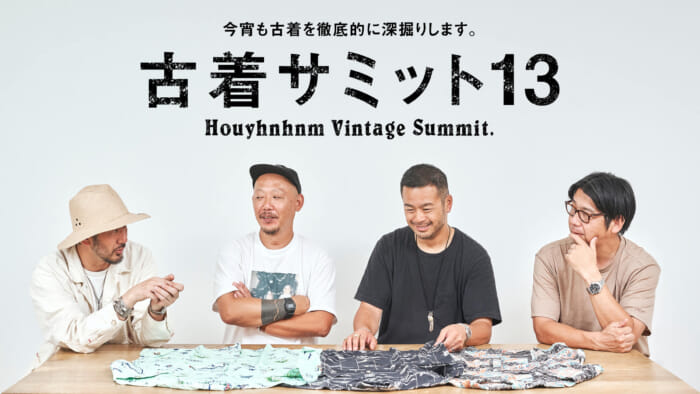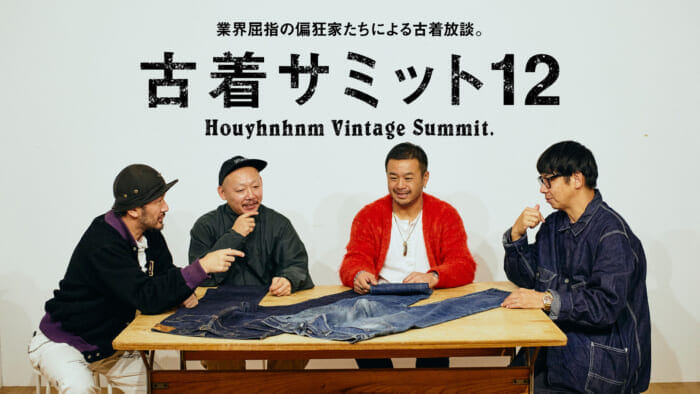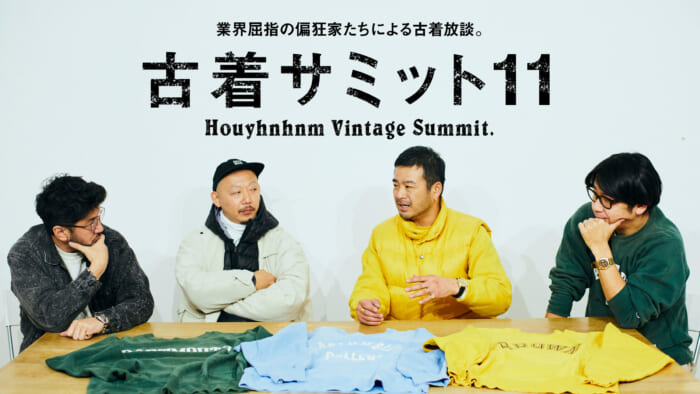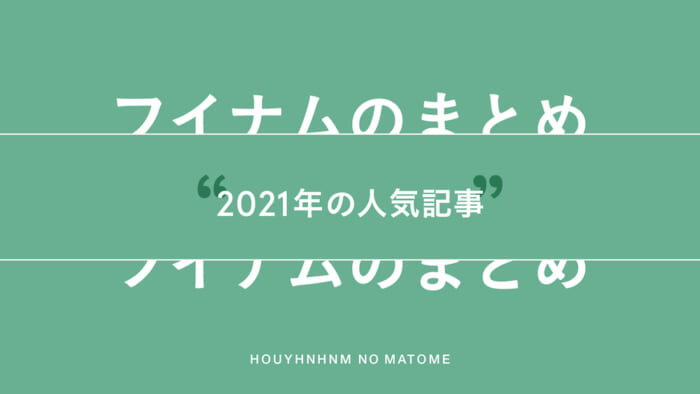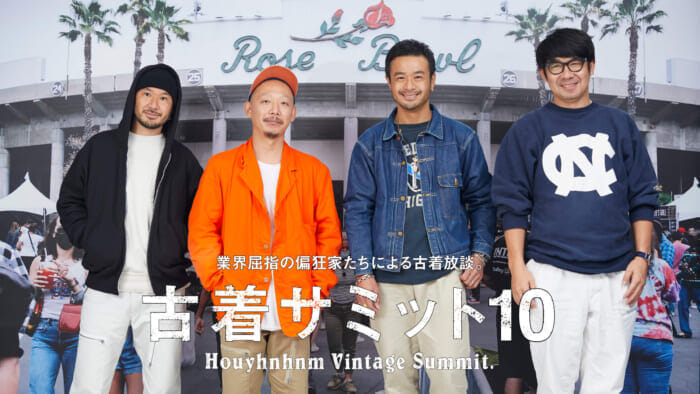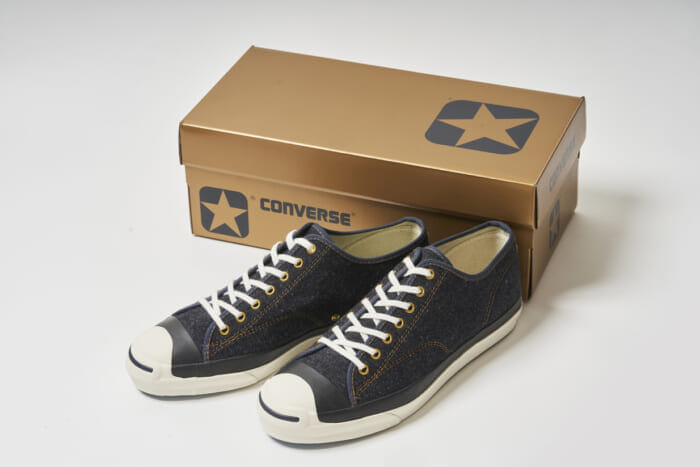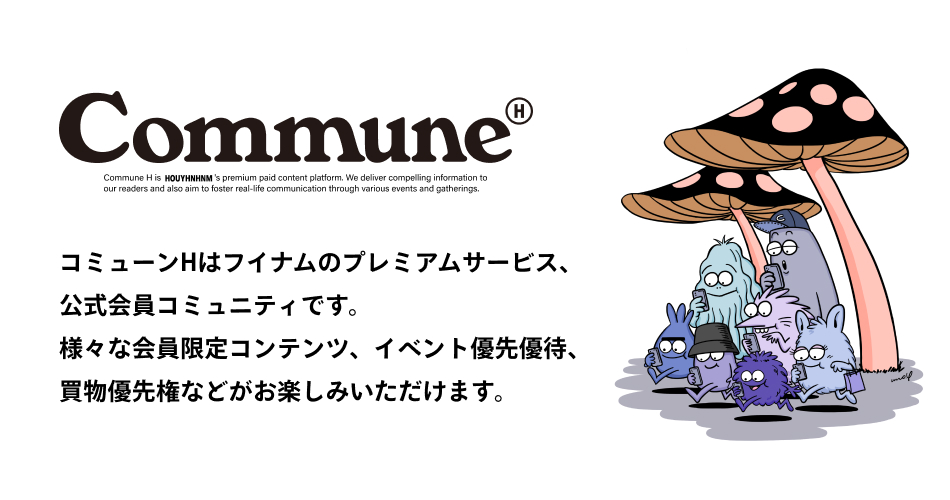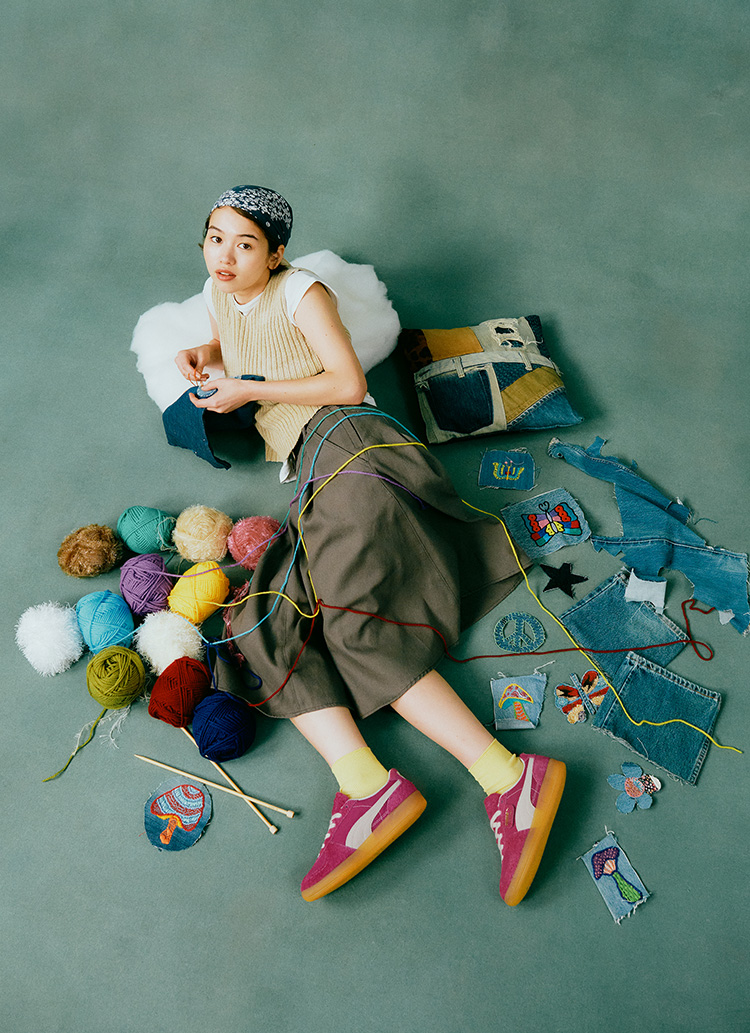Fourth lecture
Takashi Abe

'30s HEAD LIGHT COVERALL JACKET
Abe: So, my first item is a pair of coveralls from Yutaka, which were made by "Headlight" around the 1930s, but they have changed in many ways.
Fujiwara: I have seen the same model 3 times before, and after some verification, some people are saying that it might be made in Canada.
Konno: It is true that it has a Canadian look to it.
Abe: Right?

Konno: The dyeing of the fabric is generally shallow, I would say. . Although there is a roughness to the color, the color becomes shallower as it fades. A typical example is "GWG" (GREAT WESTERN GARMENT.Vintage Summit 4. but the G-jans and coveralls (see


Abe: To begin with, I've never seen anything using printed tags at Headlights in the same age group, and there are too many other uncertainties. What do you think, Mr. Chestnut?
Kurihara: I wonder . But if it was made in the U.S. in the same era, it has some basic details, doesn't it? Chintz, change buttons, etc. . But there are no both of them.
Fujiwara: . If it is older than that, it will be a moving button.
Konno: I think that's exactly what they made at the " GWG " factory. The size of the buttons, for example, seems pretty close to those of the red-eyed "GDG".
Kurihara: Oh, sure, sure . . since the shape of the pockets and such are similar, too.

Abe: I like it , but it's a little less premium than the American-made ones.
Fujiwara: No, no, not at all. Carhartt" and others were made in the U.S. and Canada at the same time, but that doesn't mean that Canadian-made products are not more popular.
Kurihara: Whether made in the U.S. or Canada, if the quality of the product itself is high, it will naturally lead to a high evaluation, and conversely, there is a sense of rarity as an irregularity.
Abe: As Yutaka says, I have been a proponent of coveralls for a long time, but I simply love them. I'm still interested in things I haven't seen before, such as the shape of the pockets, which differ from brand to brand. The final decision for this "Headlight" was because I hadn't seen it yet. Well, it's OK if it's cool even in Canada....
Kurihara: You care a lot (laughs).
All: (Laughter)
. thought it was an XX and bought it , but it was a 507. The mystery only deepens."

'60s LEVI'S 507
Abe: The second is the Levi's 507, which is a second model but not a 507XX, in other words, a second type that does not use XX denim. When I first found it, I thought it was a 507XX, but when I saw the details, I thought it was a 507. And the color is bad too (laughs).


Fujiwara: This is another model with a lot of mysteries: XX-spec denim jackets always use low-ounce denim behind the pocket flaps, and the engraving on the back of the buttons is a certain initial. The fact that none of those elements are present means that it was most likely made after the debut of the third model (557XX).
Abe: . yes, that's right. No rivets on the arms , and the stitchwork is a bit different.
Konno: Where is it?

Abe: . The box stitching at the pleats extends directly to the pockets, and the adjuster reinforcement on the back has been simplified to a single take.
Kurihara: But what proof do you have that it was manufactured later than 557XX?
Fujiwara: I think it was after 1966 when the 557 was released, i.e., when it was no longer an XX as it transitioned from the 507XX to the 557XX, and then to the 557 and 70505. In other words, it must have been after the release of the 557 in 1966. The buttons also have the "O" stamp, which was used before the 70505. However, it is not listed in the catalog of the home country version at that time....
Kurihara: . yes, that's right. It's a mystery why you made a model that goes back in history, isn't it? I can still understand if they changed the shape a bit or made it as a lower-priced version at the same time.

Abe: I know we talked about this a little earlier, but have you been able to find out the specific factory name from the initials and numbers engraved on the back of the buttons yet?
Fujiwara: . I have not been able to find out that much. However, I have the impression that they are making something a little different with the "O" stamp. The "O" mark appeared on the second and later models, but even on the 557XX, there were many irregular specifications, such as the back of the flap being made of the same fabric.
Abe: So there's still a lot of mystery.


